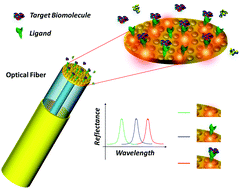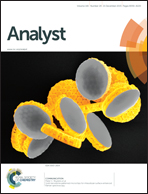Lab-on-fiber technology: a new vision for chemical and biological sensing
Abstract
The integration of microfluidics and photonic biosensors has allowed achievement of several laboratory functions in a single chip, leading to the development of photonic lab-on-a-chip technology. Although a lot of progress has been made to implement such sensors in small and easy-to-use systems, many applications such as point-of-care diagnostics and in vivo biosensing still require a sensor probe able to perform measurements at precise locations that are often hard to reach. The intrinsic property of optical fibers to conduct light to a remote location makes them an ideal platform to meet this demand. The motivation to combine the good performance of photonic biosensors on chips with the unique advantages of optical fibers has thus led to the development of the so-called lab-on-fiber technology. This emerging technology envisages the integration of functionalized materials on micro- and nano-scales (i.e. the labs) with optical fibers to realize miniaturized and advanced all-in-fiber probes, especially useful for (but not limited to) label-free chemical and biological applications. This review presents a broad overview of lab-on-fiber biosensors, with particular reference to lab-on-tip platforms, where the labs are integrated on the optical fiber facet. Light–matter interaction on the fiber tip is achieved through the integration of thin layers of nanoparticles or nanostructures supporting resonant modes, both plasmonic and photonic, highly sensitive to local modifications of the surrounding environment. According to the physical principle that is exploited, different configurations – such as localized plasmon resonance probes, surface enhanced Raman scattering probes and photonic probes – are classified, while various applications are presented in context throughout. For each device, the surface chemistry and the related functionalization protocols are reviewed. Moreover, the implementation strategies and fabrication processes, either based on bottom-up or top-down approaches, are discussed. In conclusion we highlight some of the further development opportunities, including lab-in-a-needle technology, which could have a direct and disruptive impact in localized cancer treatment applications.


 Please wait while we load your content...
Please wait while we load your content...